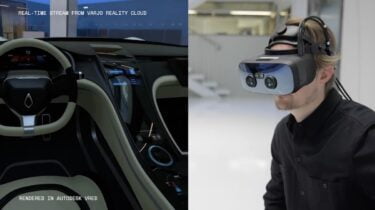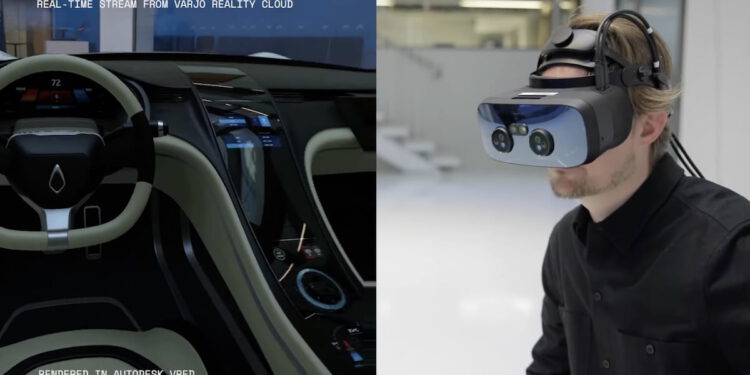
- The Varjo Reality Cloud is launched. The most important information is summarized below.
Update of April 28, 2022:
The Varjo Reality Cloud is now available for companies and professionals.
Autodesk VRED is supported at launch. During the year, support for Unity and Unreal programs will be added, as well as for headsets and mobile devices from other manufacturers.
The price of cloud streaming is $1,495 per month. The solution works for up to five users per company at the same time.
More information about the Varjo Reality Cloud can be found on the official website.
Original article from January 20, 2022:
Varjo presents cloud streaming for high-end VR
The VR glasses manufacturer Varjo is getting into XR cloud streaming. First for your own VR glasses, later possibly also for other devices.
The cloud streaming service is designed to bypass the current graphics card bottlenecks and allow companies to fire Varjo’s high-end XR glasses from the cloud. The company expects this to make it easier to use and better scalability and productivity.
“With our cloud streaming, users can participate in photorealistic virtual experiences with almost any laptop with a dedicated Nvidia GPU and a Varjo headset and collaborate in an immersive environment,” says Varjo founder and Chief technology Officer Urho Konttori on the occasion of the announcement.
Cloud streaming is an extension of the Varjo Reality Cloud and supports all devices currently sold by Varjo: the VR-3 and XR-3 as well as the Varjo Aero.
Positive first impressions of Varjo’s service
The service relies on a combination of AWS’ wavelength platform, streaming-optimized Nvidia GPUs and a “foveated transport algorithm” that uses eye tracking to track downstream bandwidth on 35 Megabits per second reduce. After the first setup, cloud streaming can be started in the Varjo software with one click. The data is automatically encrypted.
Ben Lang from Road to VR was able to try out the service with an XR-3. In the mixed reality demo, he saw a vehicle projected into the physical environment and rendered in detail (see video below). The XR glasses were connected to a laptop.
The scene is razor sharp and apart from a few occasional stutters that resulted in slight artifacts, the experience was as fluid as if it had been rendered locally, Lang writes. However, the AWS servers responsible for rendering were also only a few hundred kilometers away from the editor.
EV manufacturer praises cloud streaming
The service is still in early access and one of the first customers to test cloud streaming is the car manufacturer Rivian. The company uses the service in combination with Autodesk VRED for design and 3D visualization.
“With Varjo Reality Cloud, we can make high-level immersion an important part of our design development and scale it effectively across different locations,” says Trevor Greene, the head of the Visualization Design department. “This is a turnkey solution that allows users with very different skills to collaborate in an immersive environment.“
Varjo’s cloud streaming should be available in the first half of 2022 Varjo is currently looking for additional partners for early access tests. The service is not included in the annual usage fee of the Varjo devices and will be charged additionally. The prices are not yet known.
The company plans to offer cloud streaming for other VR glasses in the future, whether PC VR or self-sufficient.









